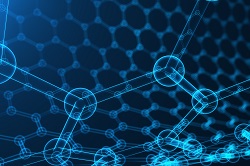EU project pushes boundaries of nanostructure knowledge
This breakthrough was discovered late in the EU-funded NanoCuI project, and came about largely by accident. While trying to develop new nanomaterials suitable for solar cells, the project team mixed three readily available chemicals in water, and found they could deposit copper iodide polytype 12R on special, conductive glass. “A study of this fifth type of copper iodide has only been published once before so as a scientist, this is an exciting story,” says project coordinator Dr. John Fielden from the University of East Anglia in the UK. “The chances are that like other forms of copper iodide, this new material conducts electricity efficiently, and the nanostructures we made appear to be the right sort of shape for use in dye-sensitised solar cells.” Copper iodide has a range of applications. It is currently used in textiles to stabilise heat in nylon, automotive engine accessories and other markets where durability and weight are a factor. The material can also be used to detect mercury. “There is a lot of interest in copper iodide as a material for thin films,” adds Fielden. “This was the starting point for us in this project.” More efficient solar cells The NanoCuI project set out to investigate whether copper iodide electrodes might enable dye-sensitized solar cells (DSSCs) to achieve greater efficiencies. A breakthrough in this field could help to transform the solar energy sector, which must maintain its competitive edge in a price conscious global market. “Most commercial solar cells are based on silicon,” explains Fielden. “These can be up to 20 % efficient, and are increasingly affordable. Their manufacture however is energy intensive and they need high light intensities to reach maximum efficiency.” Over the last 20 years, many researchers have focused on alternative dye-sensitised solar cells, based on titanium dioxide anodes (a common ingredient in paint) with molecular dyes that absorb light. These are potentially cheaper and work better in low light conditions, but peak efficiencies are still a lot lower than for silicon. Researchers are therefore interested in seeing whether new solar energy devices – called p-Type dye-sensitised photocathodes (p-DSSCs) – could be combined with traditional DSSC anodes to create more efficient devices. “In principle, this should enable us to obtain a higher voltage, and if we engineer it right, have one dye absorbing shorter wavelengths at the anode, and another the rest of the spectrum at the cathode,” says Fielden. “Absorbing more light means we can gain current, as well as voltage.” However, p-DSSCs tend to be made of nickel oxide cathodes that offer poor levels of efficiency due to its low conductivity. Fielden sought to replace this nickel oxide with copper iodide, which is around 100 times more conductive. It was during tests to develop the right copper iodide nanomaterial that he discovered a method of creating nanostructured copper iodide polytype 12R. Scientific discovery Fielden and his team successfully developed electrodes coated with tiny, interconnected particles of copper iodide, but were disappointed in their efficiency levels when tested in solar cells. “Right now, we are not sure why this is the case,” he says. “It could be the nanostructure or the material itself. In any case, I expect the impact of this project on fundamental materials science and nanoscience to be far more significant. For one thing, nobody has investigated the properties of this particular type of copper iodide before.” Indeed, Fielden asserts that scientific projects like NANOCUI, where no clear outcome is assured, are only possible with the support of funding from bodies such as the EU. “These projects really enable us to try new things,” he says. “There are always surprises and discoveries to be made. Our ability to advance and develop new products depends on taking risks, especially when it comes to complex devices like solar cells.”
Keywords
NANOCUI, solar cells, nanomaterials, copper iodide, photocathodes, p-Type, nickel oxide, electricity

